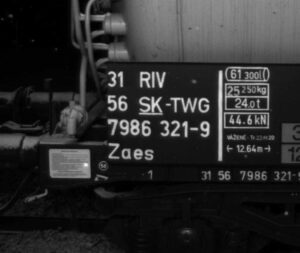Understanding ISO 6346: The Identifier of Global Containers Shipping
ISO 6346 is an international standard for the coding, identification, and marking of shipping containers. Established by the International Organization for Standardization (ISO), it provides a globally recognized system that uniquely identifies each container, facilitating efficient tracking and management.
Components of ISO 6346

ISO 6346 includes several key elements:
- Owner Code: The first three alphabets, specific to the container’s owner, and registered with the Bureau International des Containers (BIC).
- Category identifier: A single letter (typically ‘U’ for freight containers) that classifies the type of equipment.
- Serial Number: A six-digit number that provides a unique identity to the container within the owner’s fleet.
- Check Digit: A digit for validation, ensuring the accuracy of the full container code.
ISO 6346 standardizes the way containers are identified, ensuring easy tracking, error reduction in documentation, and streamlined handling across international borders.
Type Code Standards: Understanding Container Specifications
While ISO 6346 identifies containers, Type Codes specify their physical attributes. These codes, comprising four alphanumeric characters, provide critical information about the container’s size and type.
Decoding the Type Codes
Type Codes are usually found in the last four characters of the container identification system, following the ISO 6346 standard. They consist of:
- Size Code: The first two characters indicate the container’s length and height. For example, ’45G1′ implies a 45-foot container with a standard height.
- Type Code: The last two characters denote the container type and its specific characteristics, such as open-top, refrigerated, flat rack, etc.
Importance of Type Codes in Shipping
Understanding Type Codes is crucial for:
- Logistics Planning: Ensures that the right type of container is used for specific goods.
- Space Optimization: Helps in efficient stowage and space utilization in ships and storage facilities.
- Safety and Compliance: Assures that the container meets the specific requirements for certain types of cargo, especially hazardous materials or perishable goods.
The Synergy of ISO 6346 and Type Codes in Global Trade
Together, ISO 6346 and Type Codes form an indispensable duo in the shipping industry:
- Enhanced Tracking and Management: ISO 6346’s unique identification, combined with the specific details provided by Type Codes, allows for precise tracking and management of containers globally.
- Operational Efficiency: These standards streamline operations, reduce errors, and enhance communication across different stakeholders in the supply chain.
- Global Compliance: Adhering to these standards ensures compliance with international regulations, facilitating smooth customs clearance and border crossings.


